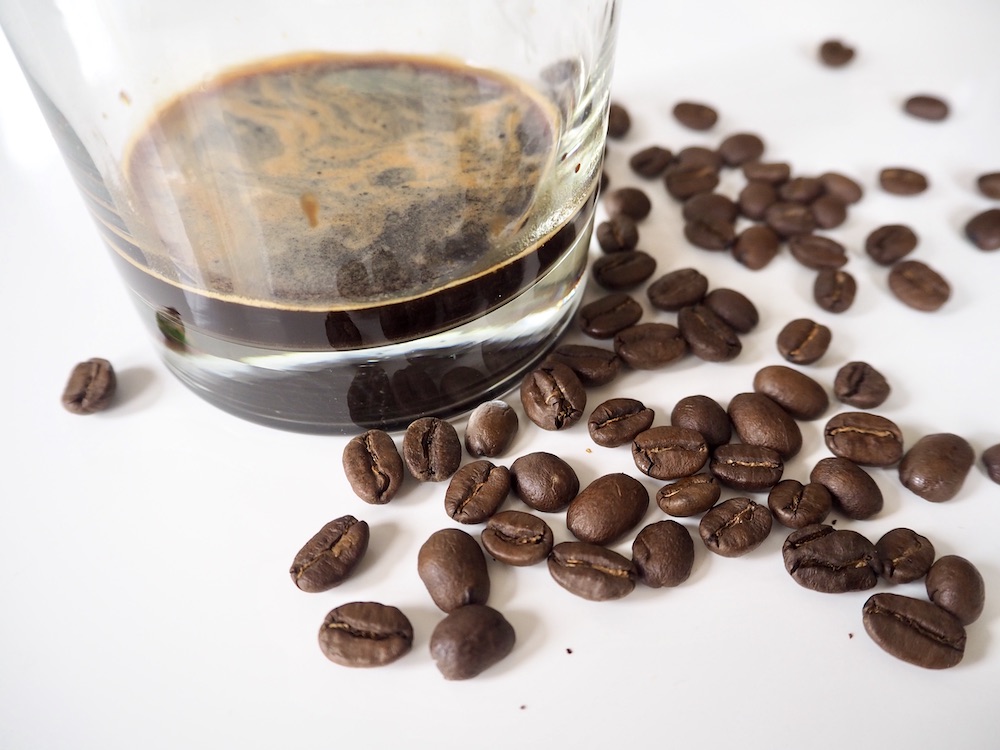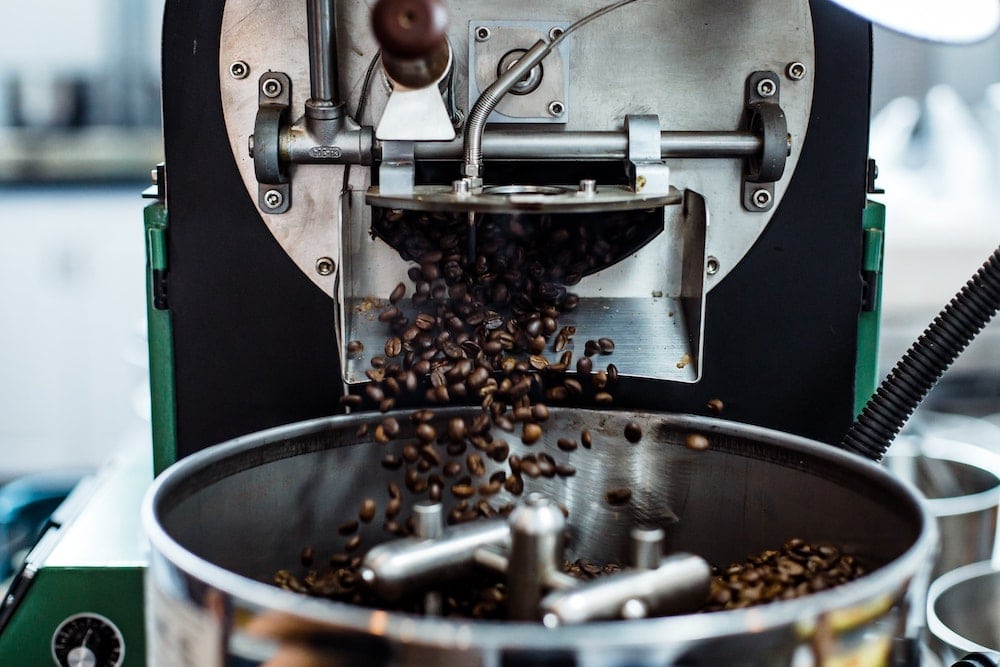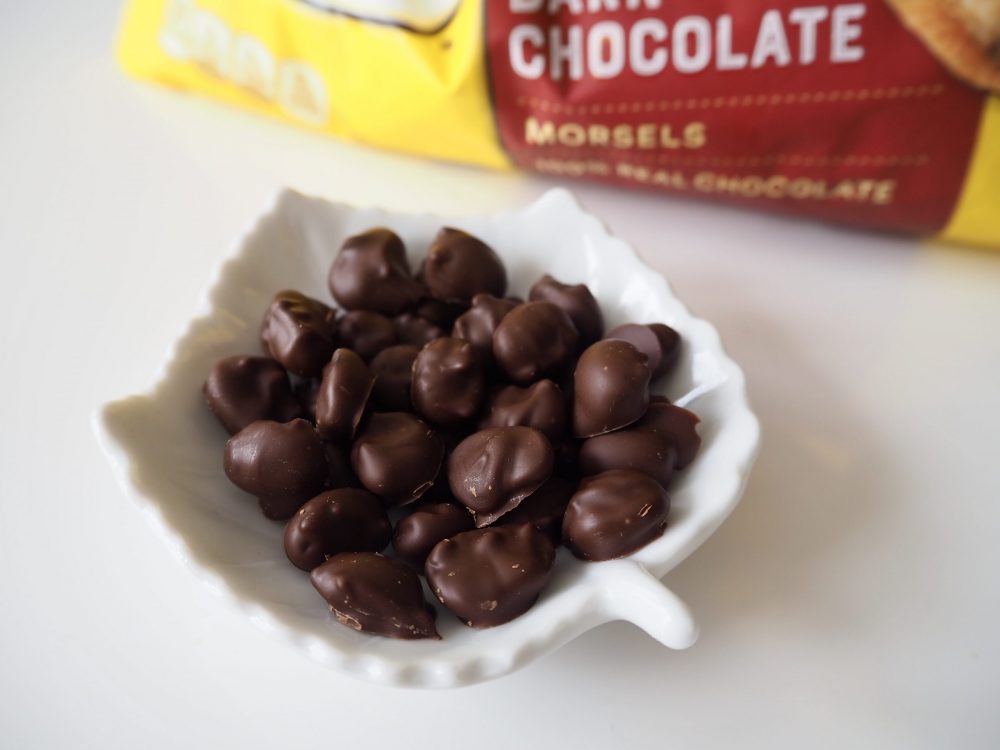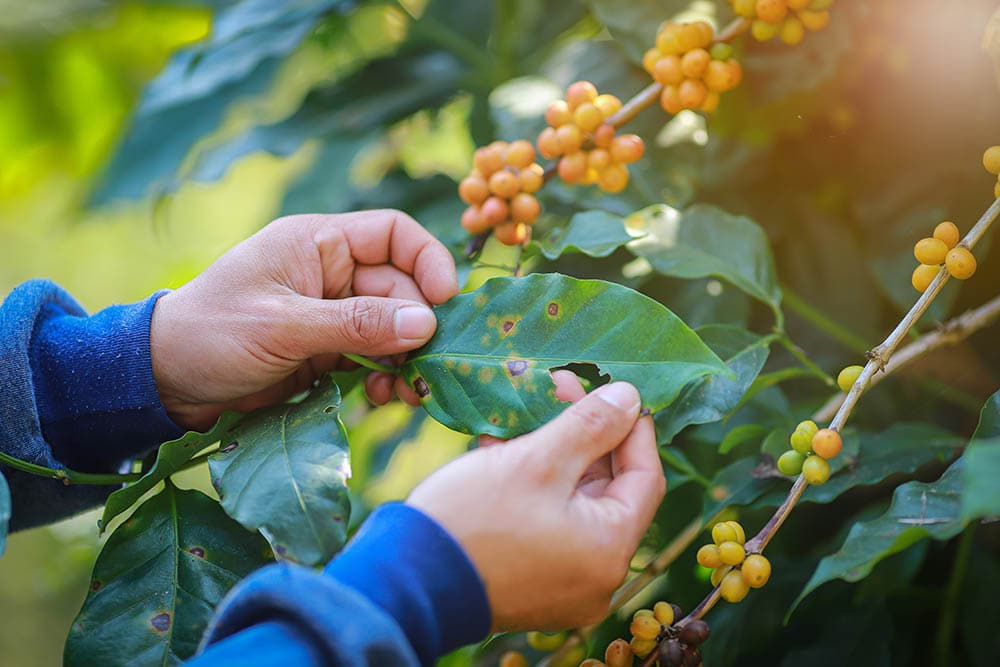
Perhaps you’re running out the door with no time to brew a fresh pot, or you have just been given an intriguing bag of beans and you can hardly wait to try a little bit. Maybe you’re just curious. Whatever the reasoning, if you find yourself wondering about eating coffee beans, you’ve come to the right place for answers.
The short answer is yes, you can eat coffee beans – but we’re going to consider this question while looking at a handful of different varieties of bean.

What Are Coffee Cherries?
Believe it or not, coffee begins as a fruit similar to a cherry. The beans that we know and love are the tough inner pits of these strange fruits, so we’re going to start at the beginning and talk about eating the fruit itself.

These little fruits don’t have a whole lot of flesh around their seeds – just a thin layer of fiber and gooey substances – but if you were to peel away this flesh and taste it, you might be a bit surprised. Because almost all of what we think of as distinctive coffee notes only come out during roasting, these cherries taste nothing like your morning cup.
Thanks to all this fleshy protection, coffee cherries taste remarkably sweet. If you’re super motivated to understand all that goes into creating coffee, it may be worth it to taste a whole variety and think about how they compare. With enough practice, coffee connoisseurs can begin to pick out distinctive varietal differences in these cherries – and it’s these subtle variations that hint at the dramatic differences present after roasting.
Green Beans – Can You Eat Raw Coffee Beans?
These so-called “green beans” are nothing like the vegetable. Green bean is simply a term for coffee beans that have been stripped of their fruit but have not yet been roasted.

Interestingly, beans in this stage are incredibly durable and resilient. Once dried properly, these beans can be shipped all around the world without too much worry. This means that – in many ways – green coffee beans are treated as a commodity, much like sugar or cotton. On their own, these beans are not particularly interesting, and their flavors are hardly varied at all.
It likely would not be too pleasant to bite into one of these tough little beans. Expect a woody texture and a tart taste. For this reason, snacking on green coffee beans has never really caught on – but we do recommend going ahead and trying some if you’re curious.
A better way to try green coffee beans? Brew a pot of green coffee! Read our step-by-step guide here.
Can You Eat Roasted Coffee Beans?
At this stage in processing these beans, we have finally arrived at something that should be familiar. Picture the hoppers of delicious-looking beans above your favorite baristas or the aromatic beans you can pick up at a grocery store – this is what we’re talking about now.
Though it’s not particularly common to eat these roasted beans on their own, there are a few reasons you might. For example, coffee roasters routinely bite into roasted beans to monitor their process, and curious home baristas should have no qualms about sampling their beans before brewing.

Roasting brings out all the interesting flavors and aromas in coffee. These beans will all have a pleasant taste, and they’ll all be slightly varied.
Feel free to chomp away on these beans – but be careful about eating too many. Since we’ve finally arrived at a form of coffee bean that’s quite enticing and may lead to a lot of snacking, it’s worth discussing the health benefits and concerns of eating coffee beans.
What are the health effects of eating coffee beans?
Caffeine
In general, there’s not too much to worry about when it comes to snacking on coffee beans. The biggest concern would be caffeine consumption, but a typical cup of brewed coffee contains about 16 times the caffeine of a single bean. This means that you’d have to eat around 66 beans to even come close to what doctors suggest as an upper limit of daily caffeine consumption. 66 beans may not seem like a lot, but it’s very unlikely that your happy snacking would get you anywhere close to that number.
That said, eating coffee beans should be considered alongside your other caffeine consumption if you are concerned about not overdoing your daily amount. Make sure to keep track of your caffeine consumption and make responsible health choices.
RELATED READ: How much caffeine is in a coffee bean?
Acid Reflux
Aside from caffeine, there is another important factor to consider while consuming coffee beans. Many people suffer from acid reflux disorder (also known as gastrointestinal reflux disease, or GERD). This is a health condition in which acids in the stomach may flow back up into the esophagus and cause a burning sensation.
In much the same way that a typical cup of coffee can exacerbate this issue, so too can eating coffee beans. One option would be a low-acid coffee like Lifeboost.
But aside from these two issues to keep in mind, there is very little to worry about when it comes to consuming coffee beans.
Chocolate-Covered Beans
Now it’s worth mentioning our absolute favorite way to consume coffee beans. Like anything, these beans are so satisfying when covered in chocolate.

Not only does the chocolate coating provide a pleasant shell to bite through, but the chocolate also adds a little bit of sugar to dampen the bitterness of the bean. It’s wild how satisfying these beans can be – and they make a great gift or stocking stuffer.
You can quickly whip some up at home or buy them already made. Trader Joe’s has long sold these beans (in a couple of different varieties) and its brand is certainly the most common. If you’re close to a Trader Joe’s, you owe it to yourself to pick up a package. If you’re not near Trader Joe’s, these beans can also be found online.
You can see our breakdown of the best chocolate-covered beans here.

Can You Eat Coffee Grounds?
You may be wondering about eating ground coffee. Like the other forms of coffee beans listed above, yes, you can eat coffee grounds. One popular way to eat coffee grounds is as espresso powder, which is finely ground and dehydrated. Espresso powder is often used in baking or as a fun dessert topping.
You’ll probably want to avoid snacking on regular ground coffee. Unlike espresso powder and roasted beans, coffee grounds will simply be difficult to handle and a challenge to swallow. If you’re intent on choking down some coffee grounds (maybe just out of sheer curiosity), don’t worry – they pose no serious health risks if consumed in moderation.
Consider using any extra grounds as an addition to your skincare routine, or as a wonderful fertilizer for your garden. See our complete list of uses for your coffee grounds here.
We hope this has answered all your questions about eating coffee beans. Enjoy your snacking.
You might be interested:














